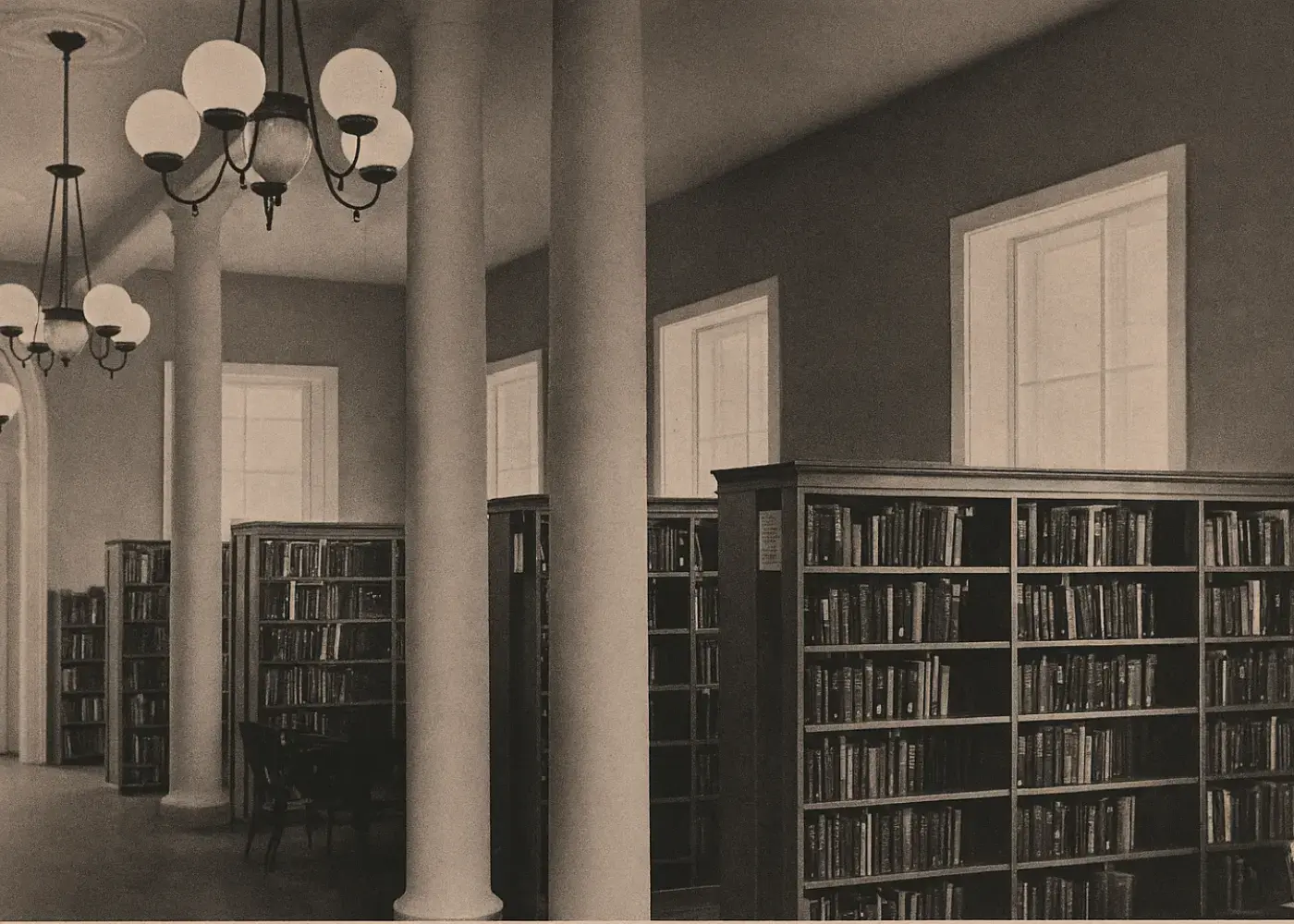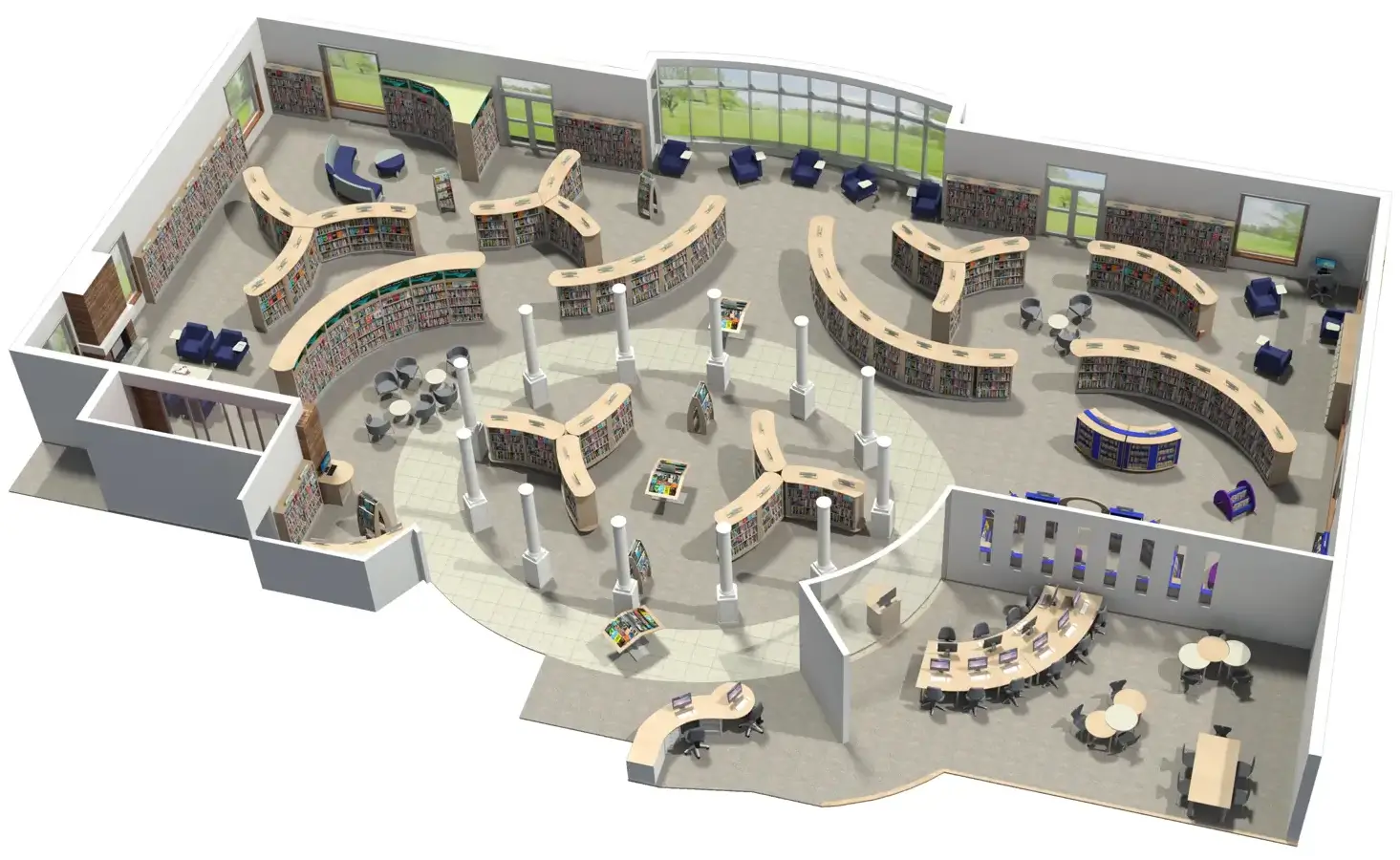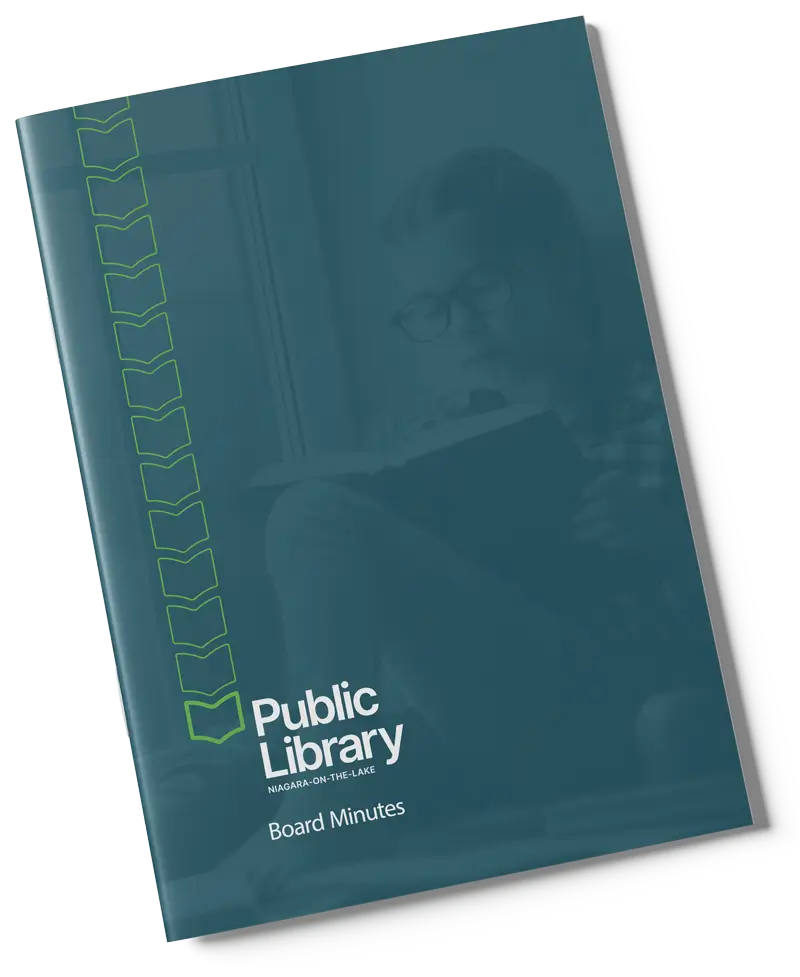On August 15, 1800, Heron and another leading subscriber by the name of Martin McClellan, were appointed to collect subscriptions and order books. The Library's initial selection, comprising some 80 works, many on religion and history, received on March 2, 1801, were soon made available for circulation among the initial subscribers.
From the outset, the Niagara Library appears to have been housed in the homes of various subscribers, including Andrew Heron, who, at different times, served as librarian, treasurer, and secretary. Under Heron's management, the collection of the Niagara Library was steadily enlarged. By 1805, the number of volumes had risen to 344, which included a large selection of works on religion and morality, literature, history, geography and travel. The collection had been opened to non-subscribers as well as Niagara area subscribers. That same year, the 49 volume collection of the Niagara Agricultural Society, containing many specialized works, was added to the Niagara Library. In exchange for the books, the Society members were given borrowing privileges in the Niagara Library.
The Library operated successfully until the War of 1812. By mid-November of 1812, the collection had grown to 827 volumes. Wartime conditions in 1813 and 1814 however, forced the cancellation of regular subscribers' meetings and between June and September 1813, when the American Forces occupied Niagara, (then known as Newark), the military borrowed books from the Library. Many other volumes were lost, stolen or destroyed by the time the American troops withdrew and burned the town in December 1813.
Although the annual meetings resumed in 1815, by 1818 membership and financial support for the Library had seriously declined. The Niagara Library ceased operations in 1820. Its holdings of some 200 books were incorporated in the new subscription library begun in November, 1818 by Andrew Heron, a bookseller and publisher of The Gleaner and Niagara Newspaper. In return for relinquishing the collection, the Niagara Library subscribers were granted the use of Heron's new library for a period of three years. The subsequent history of the Niagara Library and Heron's library is uncertain, although both appear to have been sold or dispersed.
The present public Library dates from October 1848 when the Niagara Mechanics' Institute was founded, for the "promotion of scientific pursuits, the advancement of knowledge and acquisition of a library and necessary apparatus." The first executive consisted of the Honourable W.H. Dickson and President, Judge E.C. Campbell as Vice-President and other eminent citizens. The Board of Police offered the Institute a room below the Judges' Chambers in the Court House for its fledgling operation.
The Library boasted 134 members in 1863; however, as the economy of the town began to decline, so too did the Library. Another major influence in the decline of this locally-funded institution was the increase in the use of Niagara area public school libraries. In fact, in 1895, the Ontario legislature directed that the school libraries become public institutions.
On May 6 1895, Miss Janet Carnochan, secretary of the Mechanics' Institute, recorded the annual meeting in her minutes and then, one week later, she began the minutes of the Board of Management of the Niagara Public Library.
At this time, the Library was located in the former Grand Jury Room on the third floor of the Court House. This location was not very accessible to borrowers. As a result a better home was found in 1896. The old covered market at the rear of the Court House, on the ground floor, was available. The Library moved in and occupied two-thirds of the area and the volunteer firemen had the other third. This location became the permanent base from which the Library continued to expand.
In 1912, when the new fire hall was completed, the firemen moved out and their vacated area was added to the Library by cutting an archway in the wall. Miss Carnochan worked tirelessly until her death in 1926 to establish the Library as the social, political and information centre for the community. The records seem to indicate that she was very successful in her endeavours as the library was flourishing.
Unfortunately, in the years leading up to and during World War II, the Library's membership began to decline, even though the collection continued to grow – so much so that a card index system was organized in 1933 in cooperation with the Department of Education, to better manage the collection. To try and rectify the decreasing membership and the lack of money, the local taxpayers voted in 1938 to remove the Library from the Public Library Association (a private organization) to become a free public library under the municipal government. This scenario also meant that the Niagara Library was eligible for government grants and that Board members were appointed by the Town Council and the Board of Education. The Librarian at that time was W.C. Caskey.
When Mary Duddy became Librarian in 1942, the collection had reached 10,070 books. Helen Greves succeeded her in 1967. Ms Greves was succeeded by Gerda Molson who became Chief Librarian in 1969 and served in that position for thirty-five years, until December 2004.
By 1972, the Library Board was faced with the need for additional space in the Court House location where the library was housed in the basement. The Board Chairman, Ben Bramble, sought the advice of an experienced interior decorator – Paul Johns. Mr. Johns devised a workable solution. A below-grade truck garage was revamped and joined to the existing room by a stairway. This area became the main entrance to the Library, housing the card catalogue and the checkout area. The children's section was created by connecting it to the entrance area by a short staircase. This area at one time had been an indoor rifle range!
The expanded library was officially opened on June 8, 1973. Over the next several years, there were additions to the facilities. The Janet Carnochan Room was added to house the local history collection and rare books, which in time became the Niagara Historical Resource Centre.. A children's storytelling and craft/Board meeting room was equipped in 1983 during the restoration of the Court House. A former furnace room off the children's section became a book storage and computer/telecommunications room; the vacated Chamber of Commerce office and Police Office at the front of the building were later added.
By 1998 it was apparent that only a new facility could address the need for additional space, handicapped access and parking. A new library, after much discussion and not without strong opposition, was opened at 10 Anderson Lane in November of 2000, during the Library's bicentennial year. Included in the new facility was the Janet Carnochan Collection, which was housed in the M.F. Jones Room following a donation from his son. Subsequently, the room has the M.F. Jones title above the French doors, of what is officially named the Niagara Historical Resource Centre. Since 2000, library membership has grown to over 10,322 members.
Thus, the first public library in Upper Canada has gone from the small room it occupied in the Court House building on picturesque Queen Street in the Old Town in 1848, to a beautiful, modern facility that more than meets current library standards for public service. The new building combines the historic ambiance of its environment in this heritage community of Niagara-on-the-Lake, with modern technology to form a truly vital community institution, free and open to all.
We are fortunate to be able to build on such historic and strong foundations and the sound management of previous staff. We have come full circle in that we are sharing the same piece of land as the firemen once again.
Much of our local history collection has been digitized and can be accessed at vitacollections.ca


